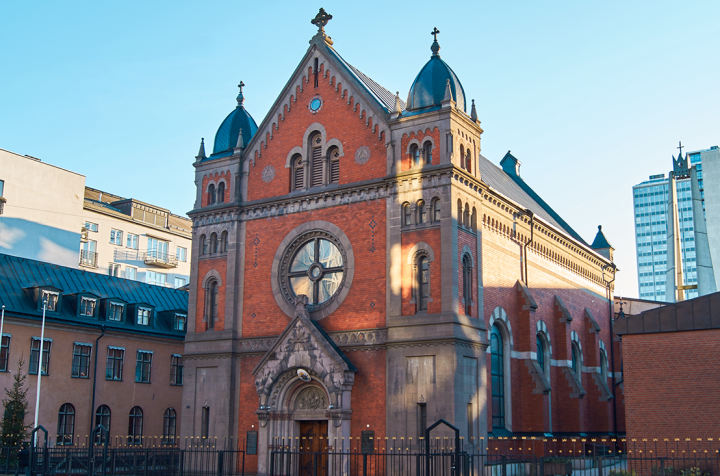
Stockholm Catholic Diocese Future-Proofs Through Digitalization
Outdated technology, complicated manual processes, and concerns about the digital future are now a thing of the past. With new system support, both security and efficiency have increased for Stockholm Catholic Diocese.


"It feels secure to have chosen a solution that is more than just a membership system."
Michel Louis, IT Manager at Stockholm Catholic Diocese
Stockholms katolska stift
Stockholms katolska stift bildades år 1953.
Medlemmar
Stiftet omfattar hela Landet och har omkring 130 000 medlemmar.
Om Stockholms katolska stift
I stiftet finns en rad stiftsorgan som arbetar med exempelvis stöd till äldre och sjuka, migrationsfrågor, medicinsk-etiska frågor och frågor kring mänskliga rättigheter och social rättvisa. Katolska kyrkan driver även skolor och folkhögskolor.
Stockholm Catholic Diocese covers the entire country with 44 parishes, from Ystad in the south to Luleå in the north. The diocese has approximately 130 000 members, but significantly more individuals are managed in the system now that the church registry has become digital.
In 2020, Stockholm Catholic Diocese faced the challenge of specifying requirements for a new system support, as their previous membership system was reaching the end of its lifecycle. In the system, which had been used for many years, deficiencies had been identified and the functionality no longer met their needs. For example, user connections to the system were made through a closed environment, which caused accessibility issues in the operations.

Searching for a Future-Proof Complete Solution Provider
When the work of specifying requirements for the new system began, an independent consultant was brought in to map out the needs regarding basic functionality and supplier requirements. Stockholm Catholic Diocese was looking for a reliable complete solution provider who could handle everything from development and operations to management and support – and who was also large enough to deliver at a relatively fast pace.
"The security aspect absolutely permeated our choice. We wanted to invest in security, quality, and a future-proof solution. It feels secure that we haven't just chosen a membership system – our operations are more complex than that, and being able to build further based on our needs in the future is a must ", says Michel Louis, IT Manager at the Catholic Church.
When Multisoft entered the picture, a requirements gathering was conducted, which included an overview and analysis of existing processes and a mapping of the organization's requirements and needs. This mapped both general basic functionality and user-specific needs.
Large Volumes of Sensitive Data
Stockholm Catholic Diocese handles large amounts of sensitive data. This includes everything from personal information such as names and social security numbers to information about sacraments, e.g., baptism, marriage, and funeral services. With the responsibility of storing this information comes high requirements for both data handling and ensuring that the data is correctly registered and updated.
"Given the type of information we store, we place high demands on security. Additionally, our records need to be correct at all times, as our registry extracts are absolutely vital for financing our operations" ,
continues Michel Louis, IT Manager at the Catholic Church.
The diocese's operations are mainly financed through members paying church fees, based on the member's taxable income, which is one of the reasons why the organization places such high demands on storing and handling information correctly.
"We have just had an audit of our new membership registry and our auditors were notably satisfied with what they saw",
says Staffan Livehed, Financial Manager at the Catholic Church.
Automation That Makes a Difference
The new system comes with a lot of new functionality. Now users in the operations, such as priests and deacons, can quickly and securely access the membership registry. Thanks to different types of user groups, data and functionality are filtered. Previously, the process of checking membership status took several days as it involved calls to the concerned parish for registration confirmation. Today it takes seconds, as lookups are done by logging in via phone in the associated app.
"Being able to access the membership registry anytime and anywhere has made a big difference in our operations. It's certainly very convenient and efficient for our users, but it also saves an incredible amount of time for us as an organization" , says Michel Louis, IT Manager at the Catholic Church.
Want to know more?
Contact me directly or enter your details in the form and we will get back to you shortly.



